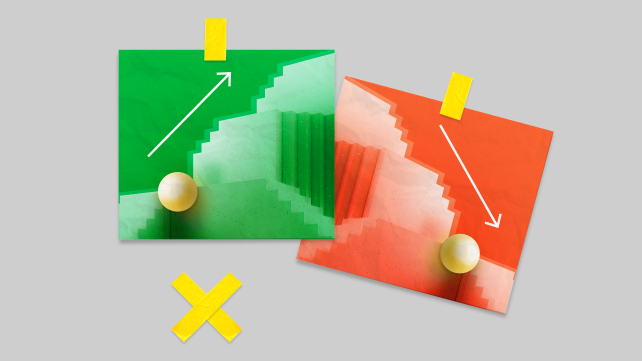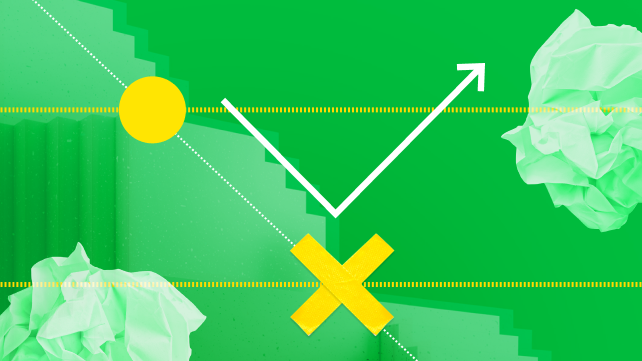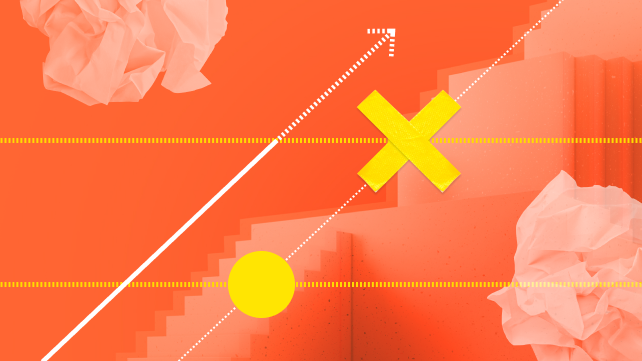Limit Order vs Stop Order: an Overview

A trade order is a request that a trader places on a marketplace or any online investment intermediary (like a broker) to trade on some asset. This is the basis. Without understanding its essence, you will not be able to trade.
In this article, we are going to consider three principal types of orders for stocks, currencies, and commodities that allow you to define the particular terms: Stop, Limit, and Stop Limit orders. We will tell you the difference between them and the way they should be used.
Besides, beginners will find a lot of useful information in our analytics section, including the glossary that you should read before you learn how to open or close an order. So, let's start!
Stop Orders
Stop orders come with the specified price for the asset, which is not available at the moment. It means that a broker will buy or sell an asset once its price reaches a predetermined level.
What is a Stop order?
You may confuse a Stop Loss order used to close a losing trade with a Stop order used to open a trade. Once the price of the order is available, the order is triggered. All that you are expected to do is to mention a stop price. For instance, it is equal to $500. When it is met, the order will be executed at any market price. If there is no asset at that price in the market, the order will not be executed.
You can use a Stop market order to buy or sell an asset. The Buy Stop order is executed at a stop price exceeding the current market price. The Sell Stop is executed at the price a trader has specified below the current market price. Such an approach allows choosing the best entry level and buying or selling an asset when the price is breaking a resistance or support levels.
How do you use Stop Loss orders?
As we have said, Stop Loss orders are commonly used to prevent losses on security positions. Let’s look at an example showing how to place a Stop Loss order.
You may set a Stop Loss order for 10% below the price of your purchase. So, if the price falls, the asset will be sold with a loss equal to 10%.
Let's say you have bought a stock at $50 per share. Immediately after this trade, you place a Stop Loss order specifying the stop loss price equal to $45. If the stock falls below $45, the trade will be executed automatically, and the shares will be sold at the prevailing market price.
Keep in mind that in the event of high volatility or a sharp drop, this price could fall below $45. The broker will choose the best market price at the current moment in accordance with your terms.
Again, the Stop order will be executed when the price reaches the specified point at any current price, just like a market order. For instance, if the share continues falling beyond the stop sell price, the order can be executed at a price lower than the specified threshold. When we set the Stop Buy order, once the specified price is reached, the asset will be bought at any price higher than the stop price.
We recommend using a Stop Loss order in a buy trade when:
- The price of an asset you have bought before and own now increases, and you want to benefit from the price gap before it has fallen.
- You expect the upward trend to continue, but you want to protect your funds from losses in case the market falls and sell the asset before its price becomes too low.
It is important to understand that if the stop price is met, the trade can be executed at the nearest price matching the preset conditions, but it may still differ from your specified entry or exit price. The shifts depend on the current market. So, there is a threshold behind which a Stop order transfers into a market order.
The most important advantage of a Stop Loss order is that its implementation does not cost anything. You will pay a regular commission for the trade. Also, there is no need for continuous monitoring of the market. It is very handy if you do not want to watch your investment assets all the time.
In addition, you do not have to make an investment decision under the influence of emotions. Of course, you are not free from making thoughtful investment decisions, but when you limit trade, the risks may be lower.

Limit orders
Now, what is a Limit order in stocks? Limit orders can be compared with Stop orders as they are executed at a specified price. But in this case, it is known as a limit price and comes with a critical difference. The trade price cannot be less beneficial than the specified limit price.
There is a variation of Limit orders known as Take Profit orders. When you place a Take Profit order, you are expected to specify the exact price, which will allow you to execute a trade with a profit. If the price of the asset does not reach the specified price, the Take Profit order does not get filled.
Let's take a closer look at the differences between Buy Limit and Buy Stop.
How does a Limit order work?
The Limit order allows a broker to sell or buy an asset at a price that is not less than or not more than the limit price, respectively. We will see a key distinction if we compare it with a Stop order. The Stop orders are executed at any market price when the stop price is reached. While Limit orders are executed at a limit price or better, they are used when there is a high chance of an advantageous trend, which allows buying or selling at a better price.
Let’s say you’d buy an asset at a price of $50. If you set this value as the limit price, your order will be completed when the market price reaches $50. If it does not hit the point, the trade will not be executed. And it is clear that you just cannot set the price as the limit price that is available at the current moment. You will use the Buy Stop if the current price is below $50. Once the price rises to this level, the buy order will automatically open. If it does not rise to $50, the trade will not be executed.
What is a Limit order example?
Do you feel slightly confused with the above information? What does limit mean in stocks? Let’s get to the bottom of it together.
For instance, you want to quickly buy (or sell) the stock. The most appropriate solution is to place a market order, which is commonly executed rapidly at any stock's current price. Let it be equal to $150. Alternatively, you may want to buy the stock only if its price decreases to $100. Here you are recommended to place a Limit Buy order with the limit price equal to $100. If the price reaches this point, the Limit order will be executed. But if the price never reaches $100, the stock will not be bought.
We hope that if you consider Buy Limit vs Buy Stop, you will understand the difference. The same mechanism is triggered when you want to sell the stock at the highest possible price. As a Sell Limit order example, let’s consider the same case. If you want to sell the stock at the highest possible price, you should place it above the current market price – let’s say you specify $160. The order will be executed at this price or higher.
A comparison of Sell Limit vs Sell Stop will help you to understand what exactly you need at the moment. There is another issue to understand. When the current market price reaches the specified limit value, the order may still not be filled. The reason is that there are orders ahead of yours that lay claim to the same shares at a limit price. Execution of Limit orders is usually performed on a first-come basis.

Stop Limit orders description
You now understand the difference: Limit order vs Stop order. By the way, if you have not ever placed an order, we recommend viewing our brief guide that will tell you how to close and open an order. Do not forget about another important order type. This is a Stop Limit order. It is only available on the MetaTrader 5 platform.
The definition is simple: it combines the features of the above-discussed ones. When you use a Stop Limit order, you are suggested to specify a price that is either higher than the current price for the asset you want to buy or lower than the current price for the asset you want to sell. When the specified price is reached, the Limit order is automatically placed at the specified price, which is known as the stop limit price. In other words, first, this order type looks like a Stop order, but when the current price reaches the stop price, it becomes a Limit trade, meaning that the trade will be executed at the stop limit price (or better). This is a great way to control the price and trade within the defined range.
How does a Stop Limit order work?
Thus, this order type includes a Stop market order, when you place an order to buy (sell) at the best possible market price after the specified price is reached, and a Limit order, when you place an order to buy (sell) an asset at a specified price or better. In this way, it limits losses by providing you with the assurance that a trade will be executed at a favourable price.
You should make a Stop Limit order to send it to a broker. It appears in the order book, waiting for execution. It can be triggered when the set conditions are satisfied. It can be cancelled by a trader and can expire as long as its validity period is specified. So, if there is no price for the asset you want, and, let’s say, the duration is one day, the order will expire at the end of the market session. However, there are various options. You can set a good-till-cancelled order, meaning that it will not expire if you do not cancel it.
We should mention the risks that come with a Stop Limit order:
- You have no guarantees in execution. The market price may never reach the stock limit price. Also, the order queue may be too long. Other traders ahead of you can take advantage of the available price, which you set as the limit price.
- Partial execution. When you want to trade with a certain number of assets (shares), you may get them bought or sold partially for a reason described above – lack of the shares at the limit price or better. The order will be left open, and that will cause multiple commissions. You will have to pay more for the trade.
What is a Stop Limit order example?
We are going to provide a simple example. Let’s say you have bought shares at $500, being sure of an upward trend. To mitigate risks, you are suggested to place a Stop Limit order, which allows you to sell these shares if a market price goes lower than the stop value. At the same time, you do not want to undersell the shares and set a limit price, which is the lowest threshold for the trade.
So, you set the stop price to $490 and the limit price to $490.50. As a result, the order should be executed when the share price reaches $490 and continues to drop. But even if the price drops to $489 (below the stop price), the order will still not be executed if, at that moment, there is no buyer ready to buy the asset at $490.50 (the limit price). In this example, the stop price differs from the limit price. But you can set the same values for just one order.
Conclusion
Using various order types may help to raise the prospects of achieving an objective. We hope the article has provided you with a good overview to help you trade with lower risks. Now you understand the differences between Buy Limit vs Buy Stop, Stop order vs Limit order, etc. Stay tuned with us to be the first to know the hottest market and industry news!




